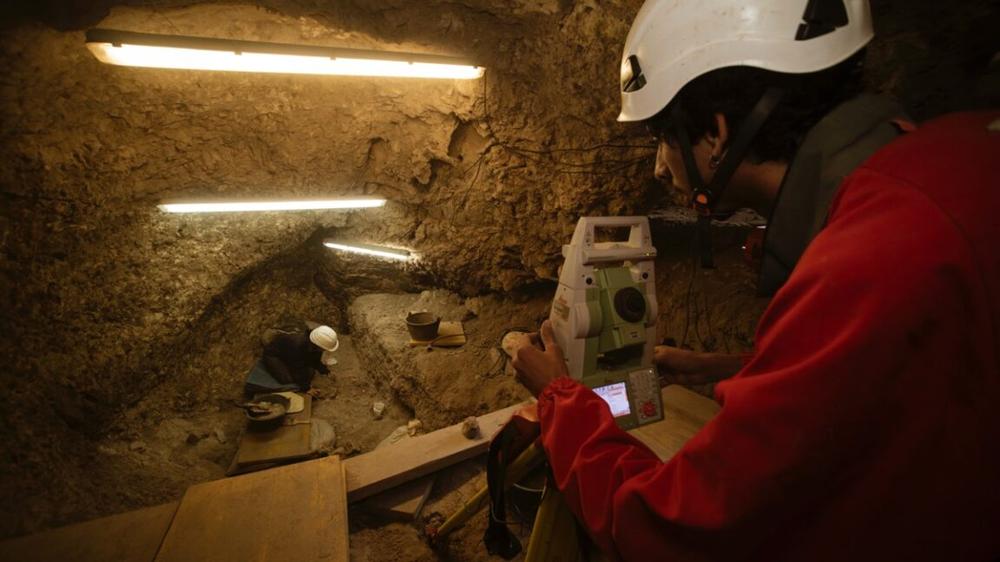Human remains from 11 individuals recovered from El Mirador Cave in Spain showed evidence of cannibalism, archaeologists have concluded. According to a new paper published in the journal Scientific Reports, the cannibalism was likely the result of a violent episode between competing Late Neolithic herding communities about 5,700 years ago.
“Cannibalism is one of the most complex behaviors to interpret, due to the inherent difficulty of understanding the act of humans consuming other humans," said co-author Palmira Saladié, a researcher at IPHES-CERCA and the Universitat Rovira i Virgili (URV). "Moreover, in many cases we lack all the necessary evidence to associate it with a specific behavioral context. Finally, societal biases tend to interpret it invariably as an act of barbarism.”
The El Mirador Cave is located at Sierra de Atapuerca, an archaeological site in the Burgos province of northern Spain. There is prior evidence of cannibalism at the Atapuerca site, including the remains of six Early Bronze Age humans, which included skull caps possibly used as containers during ceremonial consumption. In addition, since 1994, more than 160 bone fragments have been recovered from the Aurora Stratum (TD-6) in the Gran Dolina cavern at Sierra de Atapuerca. Over 30 percent of those fragments showed signs of butchering and consumption, such as slice marks, scrape marks, and chop marks.
This latest paper analyzed 5,056 human remains recovered from two sectors of El Mirador Cave using microscopy. Eight samples were selected for additional radiocarbon dating, with at least one bone taken from each stratigraphic level, and another five bones underwent strontium isotope testing.
The microscopy analysis revealed telltale slice marks, scrape marks, and chop marks, as well as evidence of cremation, peeling, fractures, and human tooth marks. This indicates the victims were skinned, the flesh removed, the bodies disarticulated, and then cooked and eaten. Radiocarbon dating placed the time between 5,700 and 5,570 years ago, while isotope analysis indicated the individuals were local and were probably eaten over the course of just a few days.
Granted, it can be difficult to decisively determine whether such marks are due to cannibalistic behavior, and the authors considered several alternate hypotheses. For example, there are funerary rituals that involve removing skulls or disarticulating the bodies, which would leave marks on the bones, but the authors note this would typically only affect between 1 to 5 percent of the remains. Injuries from weapons made of stone, metal, or bone can produce similar slice and chop marks, but these are usually found mainly on the ribs and vertebrae.
The authors concluded that the modification patterns on the bones they analyzed were not consistent with funerary rites or violent injury. The marks were more consistent with butchery involving "meat, viscera, bone marrow, and brain extraction"—particularly given the evidence of "fresh bone breakage, burning, pot polishing and human tooth marks."
Nor is it likely that this was cannibalism as a desperate measure to survive a period of famine. When the authors reviewed the relevant paleoenvironmental data, they found no indications of conditions that would lead to severe food scarcity. It is possible that a more short-term event, like crop failure or a parasitic outbreak, may have occurred, which would not leave a detectable trace in the archaeological record. But famine typically kills more vulnerable people in a community: the elderly and the very young. Yet the remains examined here span a much broader age spectrum.
“This was neither a funerary tradition nor a response to extreme famine,” said co-author Francesc Marginedas of IPHES-CERCA and URV. “The evidence points to a violent episode, given how quickly it all took place—possibly the result of conflict between neighboring farming communities.” There have been similar Neolithic massacres in Germany and Spain, but the El Mirador remains are evidence of a systematic consumption of victims, per the authors.
“Conflict and the development of strategies to manage and prevent it are part of human nature,” said co-author Antonio Rodríguez-Hidalgo of the Institute of Archaeology–Mérida (CSIC–Junta de Extremadura) and IPHES-CERCA. “Ethnographic and archaeological records show that even in the less stratified and small-scale societies, violent episodes can occur in which the enemies could be consumed as a form of ultimate elimination.”
DOI: Scientific Reports, 2025. 10.1038/s41598-025-10266-w (About DOIs).

 GPT-5 è arrivato: l'AI di OpenAI diventa più umana e potente
GPT-5 è arrivato: l'AI di OpenAI diventa più umana e potente